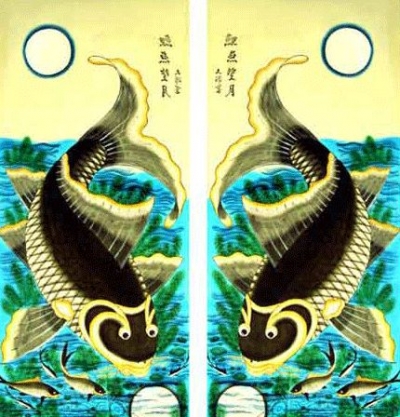Folk paintings are a combination of traditional cultural values with ancient artistic methods that have been created through the labour of past generations. There are two types of Vietnamese folk paintings, Tet (Lunar New Year Festival) paintings and worshipping paintings.
The Vietnamese believe in ancestor worship and the deification of natural phenomena, both of which are reflected in the paintings.
Due to their historical popularity, the folk paintings were produced in large quantities. This high demand was met through the use of the woodblock carving printing technique, which has been practiced by the Vietnamese for many centuries. During the Ly Dynasty (12th century), there were many families who specialized in woodblock carving. By the end of the Tran Dynasty, they were also printing paper money. At the beginning of the Le So Dynasty, the Chinese technique of carving printing boards was adopted and improved. The History Museum and the Fine Art Museum in Hanoi still keep old printing boards as archives.
During the Mac Dynasty (16th century), folk paintings developed quite extensively and were popular among the aristocracy in Thang Long. In the 18th and 19th centuries, the art of folk painting was stable and highly developed.
Depending on artistic style, drawing-printing technique, and the materials used, folk paintings are classified into painting trends according to the name of their place of production.
Each style of painting is different. However, in all the styles, shapes are created based on the concept of don tuyen binh do (single line-simple designs), which uses lines to bend the coloured shapes and to make a border for the picture. Another method used is thuan tay hay mat (easy to draw and to see). With this design form, the folk paintings do not depend on the rules of perspective. The deities are large and take the upper positions, while the ordinary people are drawn on a smaller scale and the size of the animals and the natural scenery depicted depends on their relationship to the sentiment or story being expressed. These unique characteristics make the paintings profoundly impressive.
As a result of cultural exchange, Vietnamese folk paintings have retained and developed certain traditional aspects. As well, the paintings have been influenced and enriched by the genius of other painting styles. One exception is Dong Ho paintings, which continue to exist unchanged against the challenges of time.






































































































